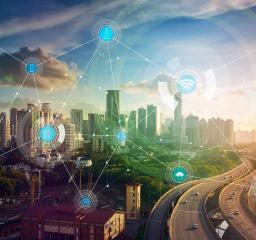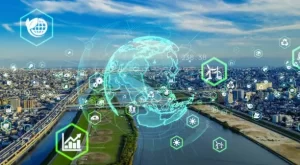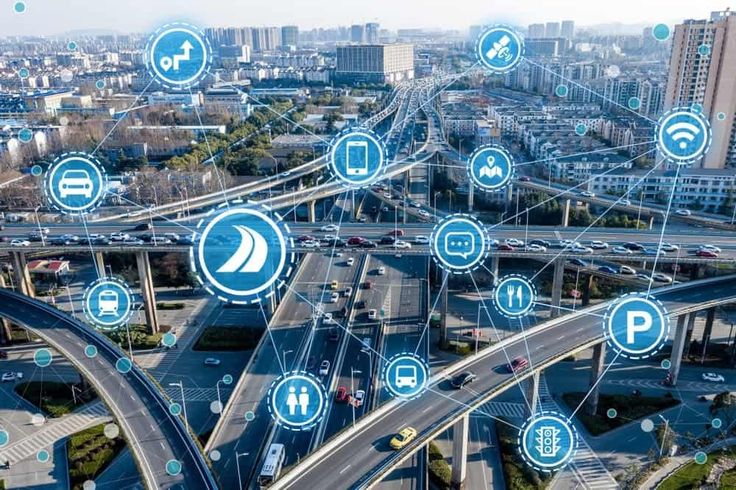The intersection of technology and sustainability has become a hot topic in recent years as society seeks to find ways to address pressing environmental challenges while continuing to advance technological innovation. From renewable energy to eco-friendly transportation, there are many exciting developments at the nexus of these two fields that hold promise for a more sustainable future.
One of the most promising areas of innovation is in the field of clean energy. Technological advances have made it possible to harness renewable sources such as solar, wind, and hydropower on a larger scale than ever before, creating opportunities for both individuals and businesses to reduce their carbon footprint and contribute to a cleaner planet.
Transportation is another key area where technology and sustainability intersect. From electric cars and bicycles to public transportation systems powered by renewable energy sources, there are a growing number of options available for those looking to reduce their reliance on fossil fuels and cut down on emissions.
In addition to these specific areas, the intersection of technology and sustainability also encompasses broader concepts such as circular economy, which aims to minimize waste and maximize resource efficiency, and smart cities, which use data and technology to optimize urban planning and reduce environmental impact.
As we continue to face urgent environmental challenges such as climate change, it is more important than ever to explore the potential of technology to promote sustainability. By leveraging innovation in a responsible and strategic way, we can create a more sustainable future for generations to come.
The intersection of technology and sustainability is a topic that is gaining increasing attention in today’s world. With climate change and environmental degradation becoming ever more pressing concerns, it is essential that we find ways to leverage technological innovation to promote sustainability and mitigate the impact of human activity on the planet.
This article explores the exciting developments taking place at the nexus of technology and sustainability. From renewable energy to eco-friendly transportation and smart cities, we delve into the ways in which technology is helping us to create a more sustainable future.
One of the key areas of focus is clean energy. With the help of technology, we are now able to harness renewable sources such as solar and wind power on a larger scale than ever before, providing opportunities to reduce our carbon footprint and transition to a cleaner, more sustainable energy system.
Transportation is another important area where technology and sustainability intersect. We explore the growing range of options available, including electric cars and bikes, as well as public transportation systems powered by renewable energy sources. By making sustainable transportation more accessible, we can help to reduce emissions and create a cleaner, more efficient system.
We also examine broader concepts such as circular economy and the ways in which data and technology can be used to optimize urban planning and reduce environmental impact in our cities.
As we face urgent environmental challenges, it is clear that we need to explore the potential of technology to promote sustainability. This article highlights the most exciting and promising developments in this area, providing insights into how we can work towards a more sustainable future.
What are some of the most promising areas of technological innovation for promoting sustainability?

There are many areas of technological innovation that hold promise for promoting sustainability. One of the most promising is in the field of renewable energy. With advances in technology, we are now able to harness renewable sources of energy such as solar, wind, and hydropower on a larger scale than ever before. This has created opportunities for individuals and businesses to reduce their carbon footprint and transition to cleaner, more sustainable energy systems.
Another promising area is in the development of sustainable transportation systems. With the help of technology, we are now able to create electric cars and bikes, as well as public transportation systems that are powered by renewable energy sources. By making sustainable transportation more accessible, we can help to reduce emissions and create a cleaner, more efficient system.
In addition, there are many other areas of innovation that hold promise for promoting sustainability. These include the development of more efficient buildings, the use of green chemistry to create sustainable materials, and the implementation of circular economy principles to minimize waste and maximize resource efficiency.
How can technology help to reduce our reliance on fossil fuels and transition to cleaner, more sustainable energy systems?
Technology has a key role to play in helping to reduce our reliance on fossil fuels and transition to cleaner, more sustainable energy systems. One of the most important ways in which technology can help is by making it possible to harness renewable sources of energy such as solar and wind power on a larger scale than ever before. This has created opportunities for individuals and businesses to reduce their carbon footprint and transition to cleaner, more sustainable energy systems.
In addition, technology can help to improve energy efficiency, reducing the amount of energy needed to power homes, buildings, and transportation systems. This can help to reduce our reliance on fossil fuels and create a more sustainable energy system.
Finally, technology can also help to promote the development of new, more sustainable energy sources such as biofuels and hydrogen. By investing in these technologies and promoting their adoption, we can help to reduce our reliance on fossil fuels and create a cleaner, more sustainable energy system for the future.
What role can smart cities play in promoting sustainability and reducing environmental impact?

Smart cities have an important role to play in promoting sustainability and reducing environmental impact. By leveraging data and technology, smart cities can optimize urban planning and create more efficient, sustainable transportation systems. For example, by using real-time data to manage traffic flow and optimize public transportation routes, smart cities can reduce congestion and emissions.
In addition, smart cities can promote the development of more efficient buildings and infrastructure, using data to identify areas where energy and resource efficiency can be improved. This can help to reduce the carbon footprint of cities and create a more sustainable urban environment.
Finally, smart cities can also play a role in promoting sustainable lifestyles and behaviors. By using technology to provide residents with information on their energy and resource use, and promoting sustainable practices such as recycling and composting, smart cities can help to create a culture of sustainability and reduce environmental impact.
What can individuals and businesses do to leverage technology in a responsible and strategic way to promote sustainability?
There are many things that individuals and businesses can do to leverage technology in a responsible and strategic way to promote sustainability. One important step is to invest in energy-efficient technologies, such as LED lighting and efficient appliances, which can help to reduce energy use and lower carbon emissions.
In addition, individuals and businesses can adopt sustainable transportation practices, such as using electric cars or bicycles, and promoting the use of public transportation systems powered by renewable energy sources.
Finally, individuals and businesses can also work to promote the development of sustainable technologies and practices, supporting research and development in areas such as renewable energy, sustainable materials, and circular economy principles. This can help to drive innovation and promote the adoption of more sustainable practices across industries.
Another important step is to be mindful of the environmental impact of technology use. This means taking steps to reduce e-waste by properly disposing of old devices, and choosing more sustainable options when making new purchases. For example, opting for refurbished electronics or devices made from recycled materials can help to reduce the environmental impact of technology use.
Finally, individuals and businesses can also work to promote sustainable practices and behaviors within their communities. This might involve educating others about the benefits of sustainability and encouraging others to adopt more sustainable practices in their own lives.
Overall, technology has a key role to play in promoting sustainability, but it is important to use it in a responsible and strategic way. By taking steps to reduce energy use, promote sustainable transportation, support innovation in sustainable technologies, and promote sustainable practices and behaviors, individuals and businesses can help to create a more sustainable future for all.
How can technology be used to promote sustainable agriculture and food systems?
Technology can play an important role in promoting sustainable agriculture and food systems. For example, precision agriculture techniques can help farmers to optimize their use of resources such as water and fertilizer, reducing waste and increasing efficiency. Additionally, technology can be used to promote sustainable food distribution systems, such as local food networks and community-supported agriculture programs. By using technology to create more sustainable agriculture and food systems, we can reduce environmental impact and promote healthier and more equitable food systems.
How can technology be used to address environmental challenges in developing countries?
Technology can be used to address a wide range of environmental challenges in developing countries, such as access to clean water, sustainable energy, and waste management. For example, solar-powered water pumps and filtration systems can provide access to clean water in areas without reliable electricity, and mobile technology can be used to provide education and resources for sustainable waste management practices. By leveraging technology to address environmental challenges in developing countries, we can promote sustainable development and improve quality of life for communities around the world.
How can we ensure that technology is developed and used in an ethical and socially responsible way?

As technology continues to play an increasingly important role in promoting sustainability, it is crucial that it is developed and used in an ethical and socially responsible way. This means considering the social and environmental impacts of technology development, and promoting the use of technology in a way that supports equitable and sustainable outcomes. Additionally, it is important to consider issues such as privacy, data security, and algorithmic bias when developing and using technology. By prioritizing ethical and socially responsible practices in technology development and use, we can ensure that technology is used to promote sustainability and social good.
How can technology be used to promote sustainable lifestyles and behaviors among individuals?
Technology can be used to promote sustainable lifestyles and behaviors among individuals by providing information, resources, and incentives for sustainable practices. For example, apps and online platforms can be used to track individual energy and resource use, provide tips for reducing environmental impact, and offer rewards for sustainable behaviors such as biking or using public transportation. By using technology to promote sustainable lifestyles and behaviors, we can create a culture of sustainability that encourages individuals to make positive choices for the environment and promote sustainable practices in their communities.
Conclusion:
The intersection of technology and sustainability holds great promise for addressing the environmental challenges of our time. By leveraging technology to promote sustainable practices and systems, we can reduce our impact on the environment and create a more sustainable future for all. However, it is crucial that technology is developed and used in a responsible and ethical way, prioritizing equitable and sustainable outcomes. Through innovation, collaboration, and a commitment to sustainability, we can create a more resilient and sustainable world for generations to come.

